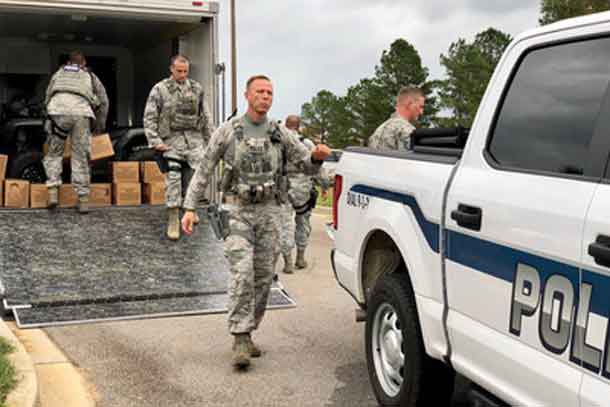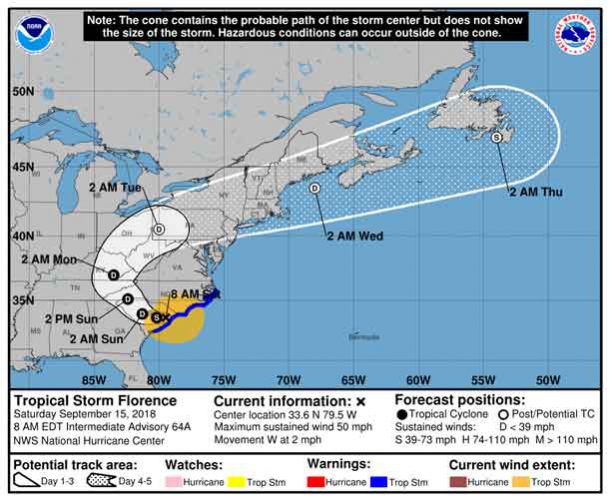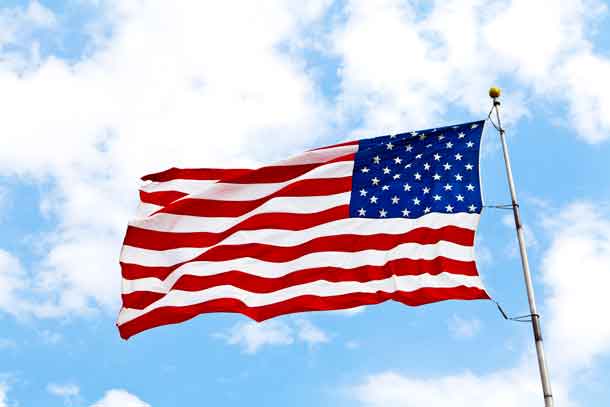

(U.S. Air National Guard photo by Master Sgt. Caycee Watson)
PETERSON AIR FORCE BASE, Colo. — U.S. Northern Command, the National Guard and military services are actively supporting Federal Emergency Management Agency along with state and local responders in the wake of Hurricane Florence’s landfall.
“We have quite literally surrounded the affected area with [Defense Department] capability that will be critical in hours and days following the storm’s impact. Secretary [Jim] Mattis’ guidance to me is clear: We are anticipating the needs,” said Air Force Gen. Terrence J. O’Shaughnessy, North American Aerospace Defense Command and Northcom commander said yesterday in a release. “We are moving forward under our own authorities to be able to respond as soon as a request is made.”
Saving lives and mitigating suffering is a top priority and military forces are well-positioned to respond immediately, the release said.
Below is an updated summary of DoD support to FEMA, state and local partners. Northcom serves as the overall synchronizer of all DoD support to FEMA.
— As requested, Northcom provides support via sea, air, and land. It has identified a total of nine military installations as FEMA staging areas for equipment and relief supplies including Fort AP Hill and Fort Lee, Virginia; Fort Bragg and Seymour Johnson Air Force Base, North Carolina; North Auxiliary Airfield and Shaw Air Force Base, South Carolina; Fort Gordon, Georgia; Maxwell Air Force Base, Alabama; and Dover Air Force Base, Delaware.
— Army Lt. Gen. Jeffrey Buchanan, commander for U.S. Army North, has been named lead component commander and will serve as the Joint Force Land Component commander.
— Air Forces Northern is the lead component for search and rescue and has postured approximately 20 helicopters and crews for this effort.
— The USS Kearsarge and USS Arlington will move in as conditions permit. Additionally, preparations are being made by Naval Air Forces Atlantic to recall aircraft back to the Norfolk area as soon as possible, working closely with the Navy Region Mid-Atlantic and airfield managers to ensure bases, personnel, and facilities are ready to support response efforts. The return plan for Norfolk-based aircraft will give priority to rotary wing assets to allow for additional land-based rotary wing support if requested.
— Northcom has deployed nearly 280 high-water vehicles to assist with ground search and rescue in the affected areas.
— The National Guard has more than 6,500 soldiers and airmen on duty, which is expected to fluctuate in the coming days. More than 10 states have mobilized support from their National Guard forces through an Emergency Management Assistance Compact to the anticipated impacted areas. In addition to the National Guard, Northcom has deployed nearly 3,000 active duty service members from all branches of the military to provide response support.
— The North Carolina National Guard has more than 2,800 personnel on state active duty with an additional 1,000 ready to go. Rescue teams are evacuating citizens as the rising waters continue to threaten homes in the region. Their first priority is safeguarding the lives and property of its state’s citizens. North Carolina National Guard is providing lifesaving and life-sustaining support to citizens in the affected areas.
— The South Carolina National Guard has over 3,200 soldiers and airmen on duty, including two search and rescue capable CH-47 Chinook and two UH-60 Black Hawk helicopters from the Pennsylvania National Guard. The South Carolina National Guard’s priority is ensuring all assets needed for post-hurricane impacts are ready to move out for lifesaving missions. These capabilities include helicopter water rescue, high-water transport vehicles, engineers to clear debris to open access routes for emergency responders and any resources needed to support the counties.
— The South Carolina National Guard currently has 126 high-water rescue vehicles, more than 100 medium support vehicles and wreckers stationed throughout the state. Planners are looking ahead to identify low-lying areas in parts of the state projected to receive high volumes of rain, and are leaning forward to identify and preposition search and rescue aviation assets near areas most vulnerable and prone to flooding. There are six helicopter aquatic rescue teams equipped with UH-60 Black Hawks and an LUH-72 Lakota helicopter.
— Patrick Air Force Base, Florida, authorities deployed 140 reservists, including search and rescue crews, to Georgia to assist with disaster relief efforts as requested.
— The Army Corps of Engineers has more than 200 employees working with FEMA and is monitoring dams in Virginia and North Carolina.
— The Defense Logistics Agency has nearly 90 personnel deployed, as well as 170 trailers staged with 14,000 cases of shelf-stable meals, cots, durable medical equipment kits, infant and toddler kits, bottled water, 107 generators, blankets and nearly 300,000 gallons of fuel.






